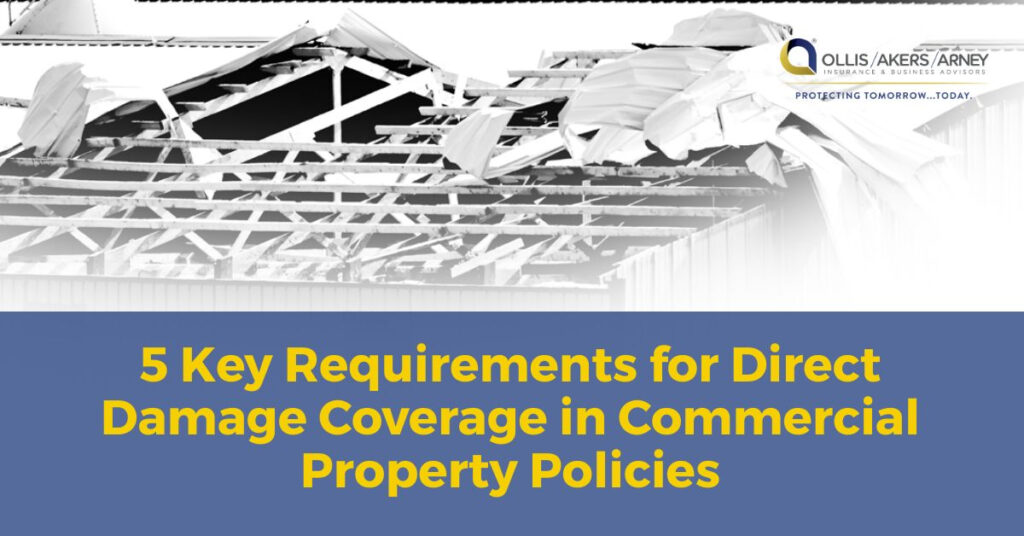Direct damage coverage is a major component of commercial property insurance. It helps pay the cost of repairing or replacing an organization’s property after it has been damaged or destroyed by a covered loss. Generally, five essential policy requirements must be met for this coverage to apply.
1. Direct Physical Damage
First, the loss must involve direct physical damage to the property. This means tangible harm that alters a commercial building’s structure or its contents, such as fire damage to walls, floors, stock or machinery.
2. Loss to Covered Property
The loss must also affect covered property. This typically includes commercial buildings, business personal property (e.g., inventory, equipment and office supplies) and third-party property currently in the policyholder’s care. Each type of property may have its own coverage limits and conditions.
3. Loss at a Covered Location
The loss must occur at a covered location listed in the policy or within a specified proximity to the insured premises, usually 100 feet to 1,000 feet. In some cases, limited coverage may be extended to property in transit or at newly acquired locations, provided they fall within the policy’s territorial limits (i.e., the United States, Puerto Rico and Canada).
4. Loss From a Covered Cause
The loss must be caused by a covered peril. A named perils policy will list each covered cause of loss, while an all risks policy will cover any peril unless specifically excluded. Commonly covered perils include fires, wind, hail and vandalism.
5. Loss Within the Policy Period
Finally, the loss must occur within the policy’s effective date range, often spanning a year from when the coverage was first activated. This period is typically found on the declarations page.
Understanding these five requirements can help policyholders ensure valid claims and promote a smooth recovery process following commercial property losses. Contact us today for more coverage guidance.
This document is not intended to be exhaustive, nor should any discussion or opinions be construed as legal advice. Readers should contact legal counsel or an insurance professional for appropriate advice. ©2025 Zywave, Inc. All rights reserved.


